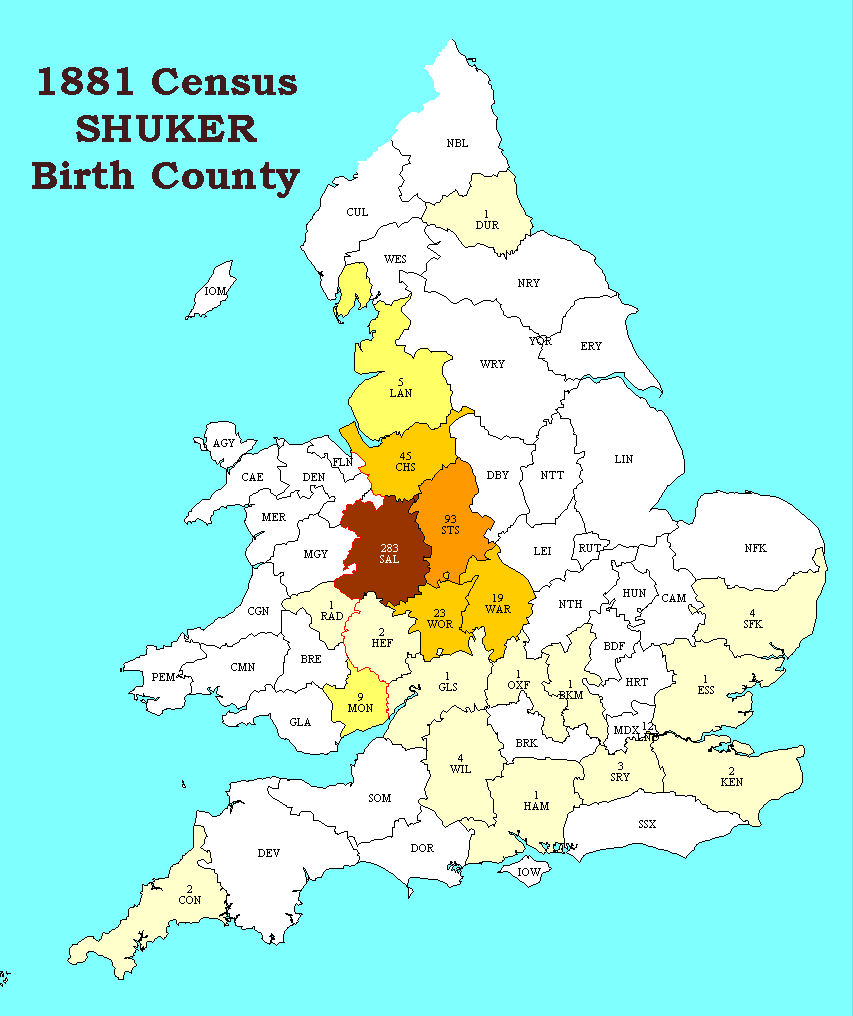
| Shuker ?N ‘devil, fiend, goblin’ OE scucca, With –er for –a. Guppy [Henry Brougham Guppy – Homes of Family Names (1890)] counted it only in Salop. | ||
| The Penguin Dictionary of Surnames. 2nd Ed. Allen Lane. 1978 |
At the time of the 1881 English census, there were 539 Shukers out of a total population of 28.8 millions. Consistently throughout the Victorian period 2 Shukers occurred for every 100,000 individuals in the English population; a rare name indeed. Of these 539 people, 51% were born in Shropshire, and if the neighbouring counties of Cheshire, Staffordshire, Worcestershire and Warwickshire are included then the proportion rises to 85%.

The Salopian origin of the Shukers can be clearly deduced from the baptism records contained in the Mormon’s IGI (International Genealogical Index); 53% of the baptisms were in Shropshire, and if the neighbouring counties are included this proportion rises to 72%. It must be pointed out that the IGI is not complete; for example, the current Myndtown (SW Shropshire) parish registers, with entries going back to the early 1800s, are locked up in the parish chest, and have never been copied. This is an important point since Myndtown was a Shuker hot spot; one Shuker family farmed near-by Mynd Mill farm for more than 120 years.
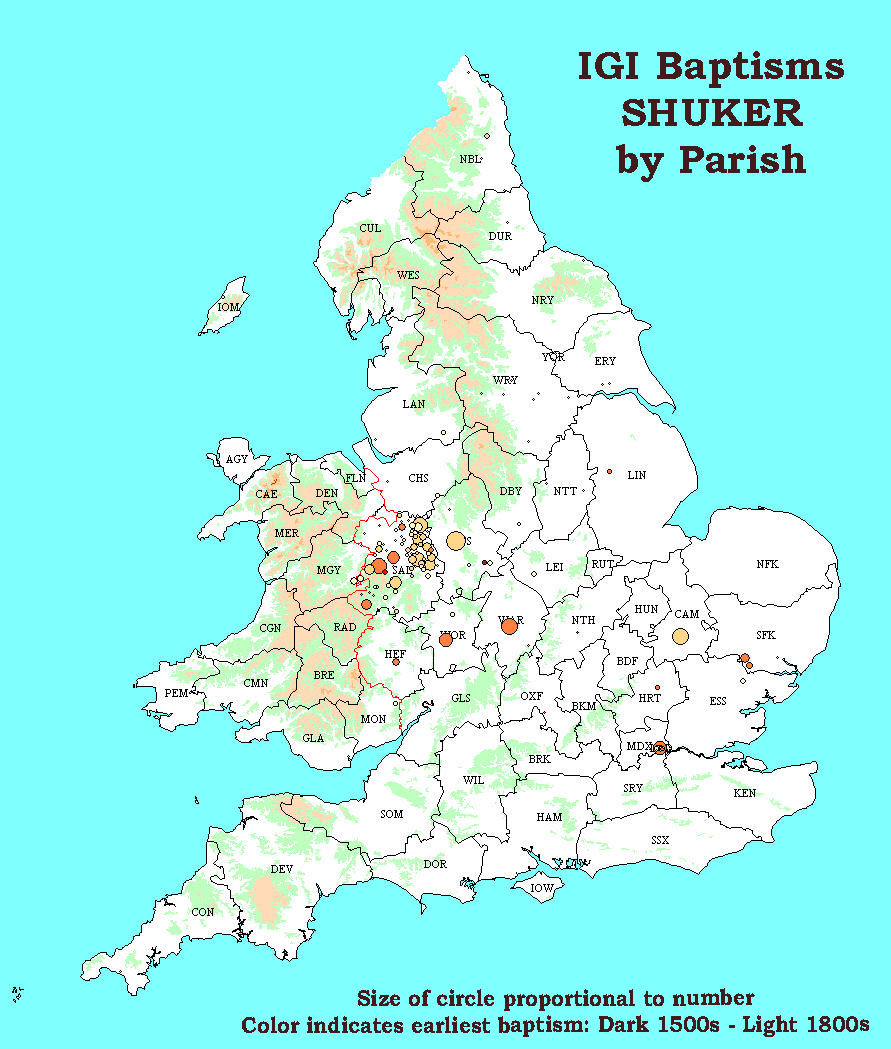
As can be seen from the map, the distribution of Shropshire Shukers is not uniform; a NE – SW axis is clearly seen – no baptisms occurred in the large area to the SE. This NE – SW axis also appears in the 1841 census – the vast majority of Shropshire parishes record not a single Shuker:
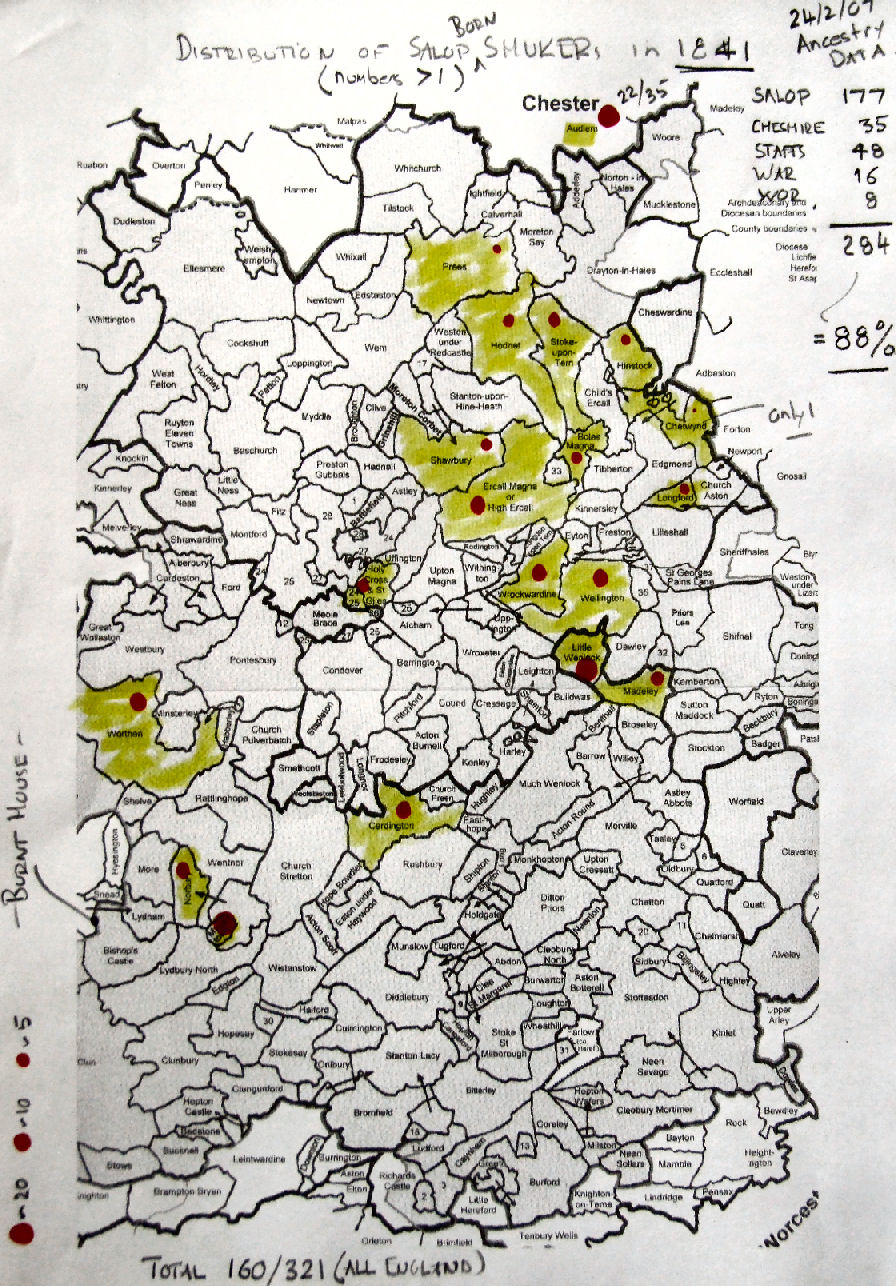
As the nineteenth century progressed, migrations from rural Shropshire to urban areas occurred as it did in most rural areas in Victorian times. In the case of Salopian Shukers, this migration was, by and large, to Cheshire and the north west and also, of course, to Birmingham and the Black Country. Some found their way to the English speaking countries of the Empire. One branch of the Myndtown Shukers emigrated to Ontario; their descendants are still there. Recent electoral rolls clearly show the result of north western and eastern movements:
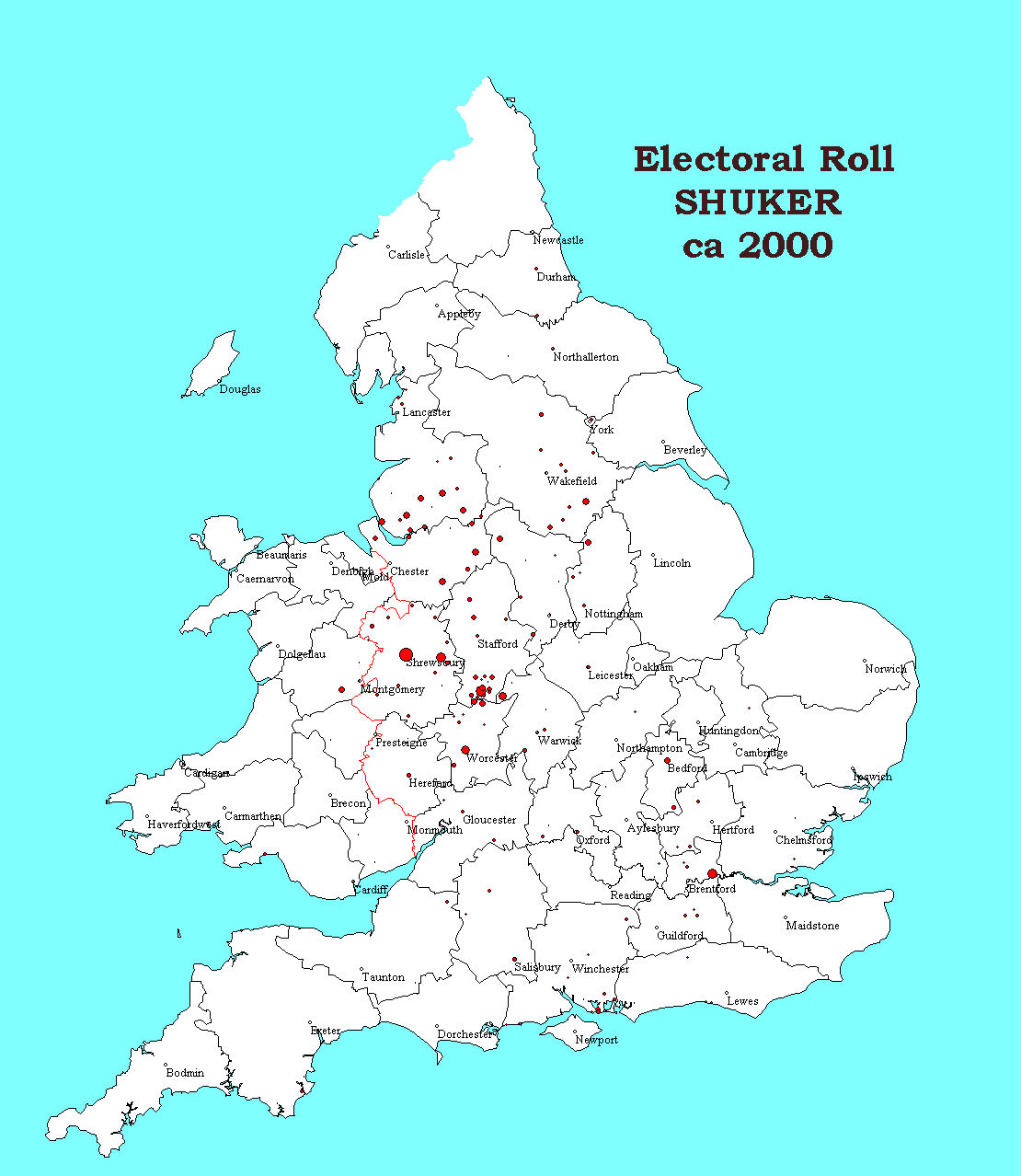
In the 17th and 18th centuries, there was a large variety of spellings of the Shuker name. The bishop's transcripts for Clun (held in the Hereford CRO) contain the following entries:
| Shucker | Langley | Baptism | 5 Sep 1671 | ||
| Sucker | Margaret | Marriage | 2 May 1698 | ||
| Suchar | William | Baptism | 17 May 1712 | ||
| Shukar | Susannah | Burial | 18 May 1721 | ||
| Suker | Hester | Baptism | 12 Apr 1724 | ||
| Sukor | John | Burial | 22 May 1727 |
To this day, locals in south Shropshire pronounce Shuker the 1671 way: SHUCK - ER. One of the earliest monuments to a Shuker lies in the churchyard of St. John the Baptist, Mainstone - a remote community on Offa's Dyke, a few miles west of the Kerry Ridgeway in SW Shropshire. The sandstone headstone, propped against a tree, records the death on 18 Dec. 1748 of 75 year old Nathaniel SUKER. Nathaniel is listed on a board of benefactors inside the church:
Mr, Nathaniel SUKER 1728. Gave 10lb, to /y/e, poor, y/e, Intrest to be given yearly/ on xst.mas-day, ...
The Shropshire Quarter Sessions for July 1665 (SALOP CRO: QS/2/4) record the award of an annual pension of £5 to the maimed soldier, William SUKER; the circumstances of his wounding are not given. In 1660 the army was disbanded and only a token force remained, so perhaps it was due to an earlier engagement.
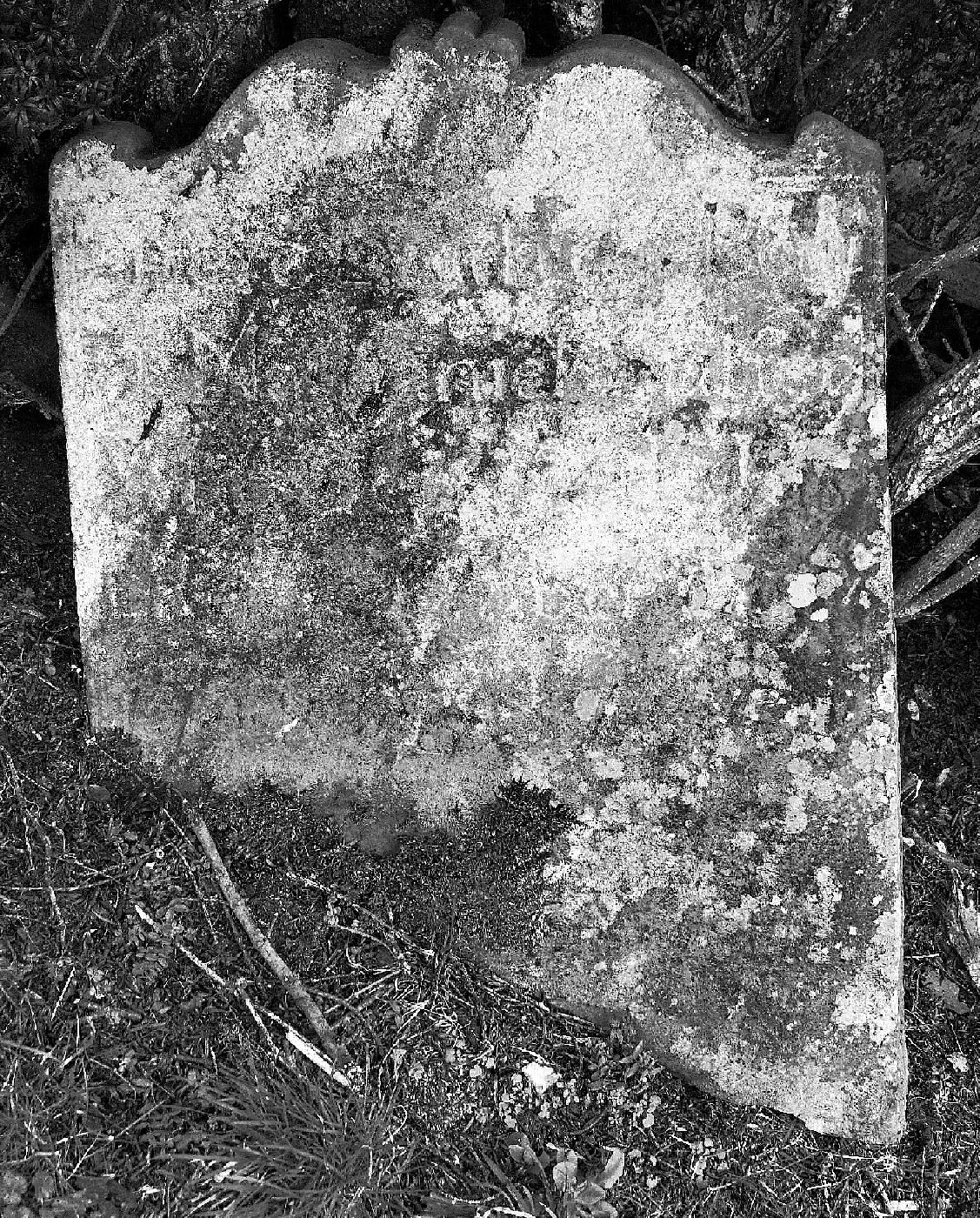
References to Shukers in the 1500s include:
1535
Bishop's Castle
John SUKER
Will proved Litchfield
1539
Press
Thomas SUCAR
MRN
1539
Press
Raff SUCAR
MRN
1542
Oswestry
Richard SUKER
Witness at Sweeny (SPL 3641)
1545
Press
Thomas SUKER
Assessed on land (IIs LSR)
1547
Pontesbury
Elinors Suger
Marriage to Thomas Blaque